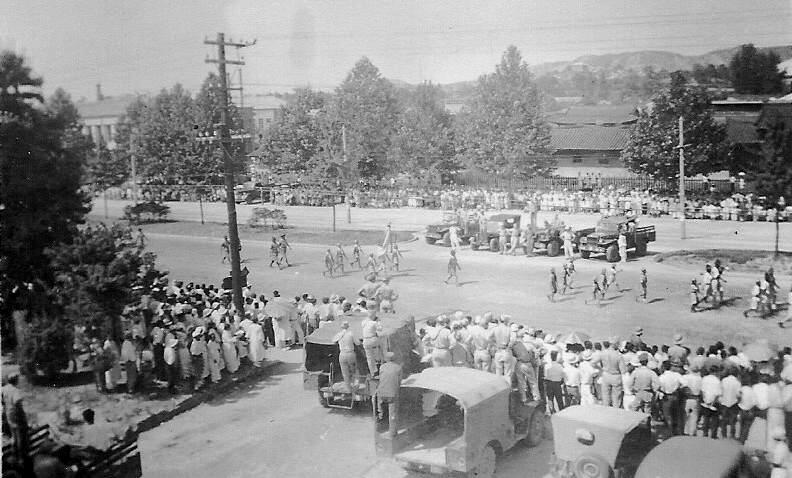
Figure 1.--This is a photographb showing Korean Boys Scouts participating in the first Independence Day parade in Seoul (August 1946). |

|
The Western Allies at the Cairo Conference committed to Korean indedendence (1943). By 1945 it was clear that Japan had lost the War and would almost certainly be stripped of their colonies, including Korea. Communists began organizing people's committees throughout the continent. Given the Communist anti-coloinal stance (until the Soviets occpied a couhntry). Many Koreans were thus impressed with socialism and communism. Largely because of the success of Christianity, there were also Koreans with aestern orientation. Few Koreans foresaw occupation and division. Even under Jaopanese occupation, Korea had remain unified. Japanese Governor-General of Korea, General Abe Nobuyuki, took it upon himseld to contact influential Koreans (early August). He realized that Japan had lost the War and was concrned about the substantil numbers of Japanese civilians living there as well as the military forces deployed there. It was expected that the Pacific War would be a long-drawn out struggle requiring a massive American invasion to force Japan tp surrender. Then the pace of events quickened. A lobe American B-29 dropped an atomic bomb on Hiroshima. Stalin not wanting to be shut out of territorial gains, declared war and launched an invasion of Manchuria (August 8). A second B-29 dropped an atomic bomb on Nagasaki (August 9). Emperor Hirohito who the Army had assured that the Amricans had only one atomic bomb finalled decided that there was no alternative but surrender, ending the Pacific War (August 15, 1945). Lyuh Woon-Hyung, a moderate left-wing politician, in contact with General Abe, agreed to head an interim regime. He set about establishing a new Korean Government (August 15). Lyuh convened an assembly in Seoul (September 6), only 3 weeks after Japan's capitulation. It was the begginning of an independent Korea. Andeven before a Government was formnally installed, korea became involved in Cold War politics.
Soviet forces reached Korea first as their drive through Manchuria was so rapid. Given Soviet behavior in post-War Europe, officials reasonably concluded that the entire colony would fall under Soviet control unless the United states intervened. They only occupied the northern half of Korea, stopping at the 38th parallel. World War II allies, the United States and the Soviet Union, agreed as a temporary measure to occupy the country as a United Nations trusteeship. Their respective occupation zones were demarked roughly at the 38th parallel, about midway north and south. The purpose of the trusteeship was prepare for a provisional national government which would become an independent state. Soviet troops which had attacked the Japanese in Manchuria entered the Korean Peninsula from the north. Americans landed in the south. Cooperation between the Americans and Soviets which proved difficult in divided Germany, proved impossible in Korea. The United Nations scheduled elections (1947). The Soviets refused to cooperate with U.N. plans and the elections were only held in the south. The Soviets objected to the idea of free elections. Instead, the Soviets set up a Communist police state in their zone--the Democratic People's Republic of Korea) (1948). And it began to heavily arm a military organized under Soviet auspices. As a result, two Korean states existed as the country became independent. The Soviets withdrew withdrew their troops (1949). The United States turned its authority over to an elected South Korea government--the Republic of Korea (1948). The United States did not provide massive military assistance and withdrew its military except for a small military advisory group. While two separate states were established, each were committed to a unified couhtry and claimed sovereignty over the entire Korean peninsula.
Navigate the Children in History Website:
[Return to the Main Korean history page]
[Return to the Main Asian history page]
[Introduction]
[Animals]
[Biographies]
[Chronology]
[Climatology]
[Clothing]
[Disease and Health]
[Economics]
[Ethnicity]
[Geography]
[History]
[Human Nature]
[Law]
[Nationalism]
[Presidents]
[Religion]
[Royalty]
[Science]
[Social Class]
[Bibliographies]
[Contributions]
[FAQs]
[Glossaries]
[Images]
[Links]
[Registration]
[Tools]
[Children in History Home]
Navigate the CIH Related Country History Pages:
[Return to the Main Korean history page]
[Return to the Main country history page]
[China]
[Japan]
[Mongoliad]
[Philippines]
[Russia]
[Taiwan]
[Tibet]
[United States]
[Vietnam]
